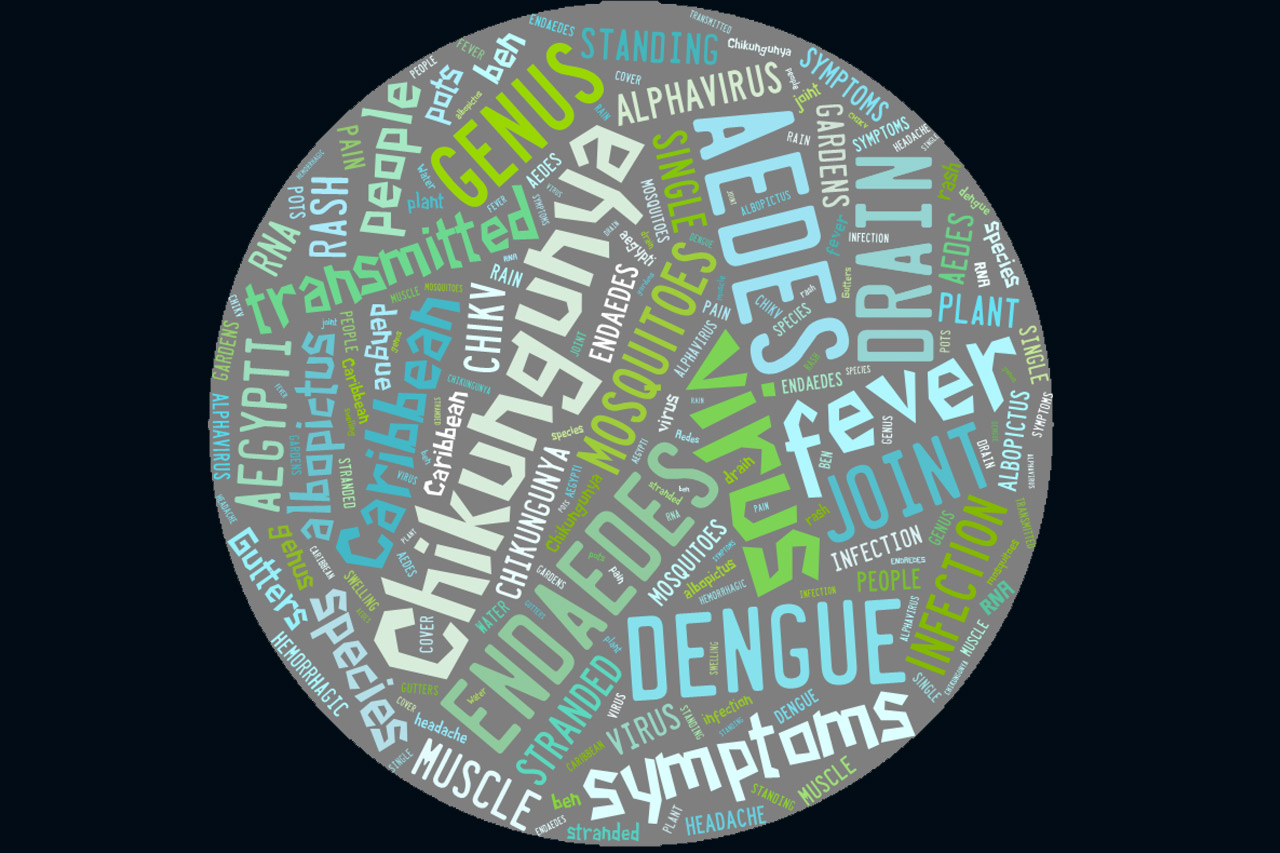Autochthonous transmission means refers to the transmission of a communicable disease from one case to another, in the same place.
Chikungunya (pronunciation: \chik-en-gun-ye) virus is transmitted to people by two species of mosquitoes belonging to the Aedes genus, Aedes aegypti and Aedes albopictus. The most common symptoms of chikungunya virus infection are fever and joint pain. Other symptoms may include headache, muscle pain, joint swelling, or rash. Outbreaks have occurred in countries in Africa, Asia, Europe, and the Indian and Pacific Oceans. In late 2013, chikungunya virus was found for the first time in the Americas on islands in the Caribbean. Chikungunya virus (CHIKV) is a single-stranded RNA virus that belongs to the family Togaviridae, genus Alphavirus. (Learn More)
Communicable diseases spread from one person to another or from an animal to a person. The spread often happens via airborne viruses or bacteria, but also through blood or other bodily fluid. The terms infectious and contagious are also used to describe communicable disease. In this section, learn about coordinated efforts to combat a few of the most serious communicable diseases on a global level. Learn More.
Confirmed case of chikungunya: a suspected case with any specific CHIK test (viral isolation, RT-PCR, Ig M, or four-fold increase of chikungunya specific antibodies titers) – PAHO/CDC confirmed case definition available at www.paho.org/chikungunya
Dengue fever (UK /ˈdɛŋɡeɪ/ or US /ˈdɛŋɡiː/), also known as breakbone fever, is a mosquito-borne tropical disease caused by the dengue virus. Symptoms include fever, headache, muscle and joint pains, and a characteristic skin rash that is similar to measles. In a small proportion of cases the disease develops into the life-threatening dengue hemorrhagic fever, resulting in bleeding, low levels of blood platelets and blood plasma leakage, or into dengue shock syndrome, where dangerously low blood pressure occurs. (Learn More)
Noncommunicable diseases (NCDs), also known as chronic diseases, are not passed from person to person. They are of long duration and generally slow progression. The four main types of noncommunicable diseases are cardiovascular diseases (like heart attacks and stroke), cancers, chronic respiratory diseases (such as chronic obstructed pulmonary disease and asthma) and diabetes. Learn More.
Genus /ˈdʒiːnəs/ (plural: genera), a taxonomic rank used in the biological classification of living and fossil organisms. In the hierarchy of biological classification, genus comes abovespecies and below family. In binomial nomenclature, the genus name forms the first part of the binomial species name for each species within the genus. Learn More.
Maculopapular rash is a type of rash characterized by a flat, red area on the skin that is covered with small confluent bumps. It may only appear red in lighter-skinned people. See images.
Polyarthralgia is when someone suffers from pain in more than one joint, and is always associated with arthritic pain. Diagnosis is difficult due to a wide range of signs and symptoms. Doctors need to review patient histories as well as carry out physical examinations in order to give an accurate diagnosis of polyarthralgia. Read more.
Species (plural: species), one of the basic units of biological classification and a taxonomic rank. A species is often defined as the largest group oforganisms capable of interbreeding and producing fertile offspring. Learn More.
Suspected case of chikungunya: patient with acute onset of fever >38°C (101°F) and severe arthralgia or arthritis not explained by other medical conditions, and who resides or has visited epidemic or endemic areas within two weeks prior the onset of the symptoms.
Viremia (UK: viraemia) is a medical condition where viruses enter the bloodstream and hence have access to the rest of the body. The name comes from combining the word virus with the Greek word for blood (haima). Read More.
